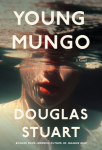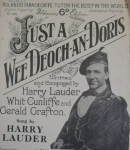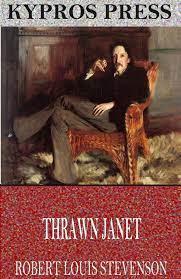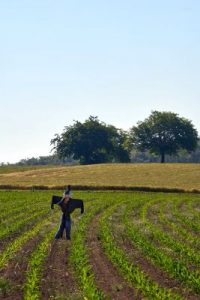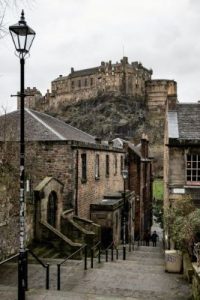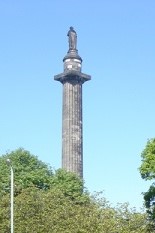
It’s been an exciting week for Britain’s civic statues. Normally, these often antiquated, discoloured and birdshit-splattered lumps of sculpted stonework, which adorn town and city centres across the land and commemorate important figures and events of bygone eras, go cruelly unnoticed by 99.9% of the folk who trudge past them. Well, that’s changed after what happened a week ago.
On June 7th, in Bristol, a statue of the 17th-century Bristolian merchant and Tory politician Edward Colston got hauled down by a crowd protesting the police’s murder of George Floyd in the USA and was tossed into the drink at the nearby harbour. It’s ironic that this monument of Colston’s time on earth should end up underwater, for that was where many of the victims of Colston’s business activities ended up too. During his involvement with notorious slave-traders the Royal African Company, the company shipped an estimated 84,000 Africans across the Atlantic and 19,000 of them died en route and were thrown overboard to the waves and sharks.
Suddenly, everybody’s eyeing up the statues that, at some time or other and for some reason or other, have been erected in Britain’s public spaces. Suddenly, everybody’s wondering about the virtue, or lack of virtue, of those statues’ subjects. Do they deserve to occupy public space? Or, like the representation of Colston, do they deserve to be dumped in the nearest body of water?
Recently, I’ve been thinking about the city I know best, Scotland’s capital city of Edinburgh, and the chunks of stony civic artistry that decorate it. In the manner of the old, risqué question-and-answer game kiss, marry, kill? (which was known in the less genteel parts I hail from as shag, marry, kill?), here’s an evaluation of Edinburgh’s existing statues and potential statues under the options keep, erect or chuck in the Firth of Forth?
The first statue many people see when arriving in Edinburgh – when they walk out of the bus station into St Andrew Square – is a strong candidate for being chucked into the chilly waters north of the city. Perched on a 150-foot-high column in the middle of the square is a statue of Henry Dundas, 1st Viscount Melville. Melville started off as a lawyer and became Lord Advocate (Scotland’s chief public prosecutor) at the age of 33, but then moved into politics. It was as Secretary of State for Britain’s Home Department in the 1790s that he was responsible for delaying the abolition of the slave trade. By the time it was abolished, a decade-and-a-half later in 1807, a huge additional number of Africans had ended up in slavery, a half-million according to Dundas’s Wikipedia entry.
According to his descendent Bobby Dundas, 10th Viscount Melville, Henry Dundas was actually an abolitionist who’d been forced to be pragmatic. He’d supposedly “provided the word ‘gradual’” so that abolition “would get through legislation and became law, and without that, it wouldn’t have passed for decades.” But while there is something good to be said about Dundas during his time as a lawyer – which I’ll describe later in this entry – by the time of his political career I doubt if he was anything more than what J.M. Barrie described as ‘a Scotsman on the make’. He saw his fortunes bound up with the rise and reputation of the ‘second’ British Empire and spent, for example, eight years as Director of the Board of Control over the East India Company. Concern for the hundreds of thousands whose lives were blighted or ended by slavery was surely not high in his list of priorities.
I suppose you could make a case for Dundas remaining in St Andrew Square (with a giant plaque providing information about his misdeeds) as a rebuff to those Scottish nationalists, still too many in number, who kid themselves that Scotland was only ever a subject, a victim even, of the British Empire. As the historian Tom Nairn memorably put it in 1968: “Scotland is not a colony, a semi-colony, a pseudo-colony, a near-colony, a neo-colony, or any other colony of the English. She is a junior but (as these things go) a highly successful partner in the general business enterprise of Anglo-Scots imperialism.” Dundas’s statue is an uncomfortable reminder of this.

From the Brown digital repository at Brown University Library
Meanwhile, another statue I’m not fond of stands close by, that of George IV at the intersection of George Street and Hanover Street. This annoys me because it embodies the grovelling, forelock-tugging attitude that a certain, bourgeoise section of Scottish society has always shown to the British Royal Family. In 1822 George arrived in Edinburgh on what was the first visit to Scotland by a British monarch in two centuries and was greeted by a grotesque, over-the-top display of kilts, bagpipes and tartanry stage-managed by that great Caledonian romanticizer Sir Walter Scott. This helped cement the tartan-swathed Brigadoon image that the outside world has had of Scotland since (though of course Scott’s novels helped cement it too).
The fact that it went bonkers over a king as unappealing as George IV is rather humiliating for Edinburgh in retrospect. George is best-known today as the vain, idiotic Prince Regent character played by Hugh Laurie in the TV comedy series Blackadder the Third (1987). (“Someone said I had the wit and intellect of a donkey.” “Oh, an absurd suggestion sir, unless it was a particularly stupid donkey.”) However, Hugh Laurie was at least slim. By 1822 George had become grotesquely obese after years of gluttony and drunkenness. His vanity remained, though, and according to the artist David Wilkie would spend three hours getting dressed and corseted up but still resembled ‘a great sausage stuffed into the covering’.
Of course, the depiction of George IV on George Street / Hanover Street is a highly flattering one. Perhaps the absurdity of 1822’s pageantry should be highlighted by having the current statue of George replaced with a more accurate one. I’d like to see a statue of him as he really was during the visit – crammed into Highland dress with, under his kilt, his swollen gout-stricken legs wrapped up in flesh-coloured tights. A sight for sore eyes, in other words.
Over in Edinburgh Old Town, within the precincts of Edinburgh Castle, you’ll find another statue that’s problematic. This is of Field Marshal Douglas Haig, the 1st Earl Haig and commander of the British Expeditionary Force during the latter three years of World War One, who was born in Edinburgh’s Charlotte Square in 1861. Haig’s reputation as a military commander and tactician has taken a battering posthumously, notably with the publication of Alan Clark’s damning historical volume The Donkeys in 1961 and the release of Richard Attenborough’s equally damning film Oh, What a Lovely War! In 1969. These helped create the present-day image of Haig as a deluded mass-murdering incompetent, worthy of the nicknames ‘Butcher Haig’ and ‘the Butcher of the Somme’. His reputation also got a kicking in 1989’s Blackadder Goes Forth, in which Geoffrey Palmer appeared as Haig, using a dustpan and brush to nonchalantly sweep up fallen toy soldiers from a battlefield diorama and toss them over his shoulder. Yes, Edinburgh has cornered the market for statues of people who were in Blackadder.
But I wouldn’t throw Haig’s statue into the Forth. It really belongs in a museum – a museum that illustrates the historical ebbs and flows of reputation as time moves on, events become distant, viewpoints shift and opinions change. It’s easy to forget today that up until his death, Haig was massively popular among the British public, which included the many ex-soldiers who’d served under him, and his funeral in 1928 was marked by a day of national mourning.
And problematic too is the statue in Parliament Square, behind St Giles’ Cathedral, of King Charles II. After he came to the throne in 1660, Charles and his brother, the future King James II, set up the Royal African Company of which Edward Colston was a key member. During its operations, the company was responsible for the transportation of more slaves than any other institution – an estimated 212,000, of whom 44,000 died before they reached the Americas. However, Charles II’s statue has just been the subject of a thoughtful article by Alan Ramsay in the web magazine Bella Caledonia, so I won’t say any more about it. Here’s a link to the article.
However, not far away, in the New College Quadrangle on the Mound, you’ll find a statue of a slave. The subject of this statue spent two years toiling in a galley. According to his Wikipedia entry, he and his fellow slaves ‘were chained to benches and rowed throughout the day without a change of posture while an officer watched over them with a whip in hand’. Wow, you’re probably thinking, well done, Edinburgh! You made the right choice with one of your statues! Well, don’t get too excited. For that slave was none other than the minister and theologian John Knox, who led the Reformation in Scotland and founded the Church of Scotland. Earlier, from 1547 to 1549, he’d been a galley slave under the French. Obviously, Knox is someone whose views on women (in 1556-58 he penned the memorably titled treatise First Blast of the Trumpet against the Monstrous Regiment of Women) and on practitioners of other religions (he described the Catholic church as ‘a synagogue of Satan’ and a ‘harlot’ that was ‘polluted with all kinds of spiritual fornication’ and full of ‘pestilent papists’) are ones most people find unpalatable today.

From the National Library of Wales
I really don’t know about Knox’s statue in Edinburgh. He established Scotland’s national church and indirectly shaped the nation’s character for centuries to come, so you can’t really not have a statue of him there. But it’s like have your reactionary and slightly Alzheimer’s-addled granddad at the table for Christmas dinner. He may be coming out with a stream of racist inventive, but you know you owe your existence to him. So you just smile at him and pretend not to hear what he’s saying.
To be more positive – there are statues in Edinburgh I like too. Unexpectedly but pleasingly, the Old Calton Cemetery on Calton Hill has one of Abraham Lincoln, the 16th president of the United States, the man who delivered the Gettysburg address and preserved the American Union during the Civil War, and surely a contender for the title of Most Awesome US President Ever. (Not that he’s had much competition for that title recently.) Honest Abe’s statue stands magisterially atop a memorial to Scottish-American soldiers. Nearby in the cemetery is an obelisk – okay, not quite a statue – erected in memory of the members of a universal suffrage group called the Friends of the People, who were persecuted in 1793. Nowadays, of course, their ideas are seen as the stuff of basic Human Rights, but to the establishment of the time the Friends of the People were unspeakable subversives.
I like the fact that Edinburgh has some statues of writers. So it should do, as it was designated the first ever City of Literature by UNESCO in 2004. There’s one of Sir Walter Scott on Princes Street, at the bottom of the Scott monument, and one of Robert Burns at Leith (in addition to the Burns Monument on Calton Hill), and one of Robert Louis Stevenson at Colinton, and one of Sherlock Holmes commemorating the Edinburgh-born Sir Arthur Conan Doyle at Picardy Place. A few less well-known scribblers have statues too. For example, the poet Robert Fergusson has one pacing past the entrance to the Canongate Cemetery, the poet and playwright Allan Ramsay has one in Princess Street Gardens, and the 19th-century children’s novelist Catherine Sinclair has a gothic, tapering structure in her memory standing on the corner of North Charlotte Street and St Colme Street.


I’m also glad the city has paid tribute to its most famous philosopher David Hume, who has a statue on the Royal Mile, to its most famous economist Adam Smith, who has a statue on the Royal Mile too, and to its most famous mathematical physicist James Clerk Maxwell, who has one on George Street. And let’s not forget James Braidwood, who created Edinburgh’s – and the world’s – first municipal firefighting service and is honoured by a statue in Parliament Square.
And what statues should be erected? Well, it seems a no-brainer to have a statue somewhere in Scotland’s capital city commemorating the man who established the illegality of slavery in the country. This was Joseph Knight, an African slave purchased in Jamaica by the sugar-plantation owner Sir John Wedderburn of Ballendean, 6th Baronet of Blackness. Wedderburn brought Knight back to Scotland as a servant in 1769 and when Knight protested his freedom, the pair of them ended up in court. A final decision went in Knight’s favour in the Court of Session in 1777, when it was decreed that slavery was not recognised under Scots Law. Indeed, a statue of Knight in Edinburgh might even improve Henry Dundas’s reputation by a smidgeon, for it was Dundas, Lord Advocate at the time, who acted as Knight’s counsel in the Court of Session. According to the famous lawyer and biographer James Boswell, Dundas gave a stirring speech in support of Knight’s cause. Which makes his subsequent actions regarding the abolition of the slave trade seem even more depressing.
From the statues I’ve listed so far, there’s obviously a dearth of female ones in Edinburgh. So I’d also like to see a statue of Elsie Inglis, the Edinburgh-educated, late 19th century / early 20th century doctor and surgeon who founded the Scottish Women’s Hospitals and did much to improve healthcare for female patients. She was also involved in the Suffrage Movement and during World War I set up Scottish Women’s Hospital units to care for injured soldiers in Belgium, France, Russia and Serbia, That last country awarded her the Serbian Order of the White Eagle a year before her death in 1917.

© Penguin Books
The great Edinburgh novelist Muriel Spark should be honoured too. Why not have a statue of her most famous literary creation, Miss Jean Brodie, swanning around Marchmont, where Spark went to school and supposedly got some of her inspiration for The Prime of Miss Jean Brodie (1961) from a teacher there? Mind you, I could see people objecting to the statue on account of Brodie’s politics, for in the novel she was a fan of Benito Mussolini and an admirer of fascism. Finally, I don’t see why the much-missed parliamentarian Margo MacDonald shouldn’t be commemorated with a statue outside Easter Road Stadium in Leith, home of her favourite football club, Hibernian.
And now for a few more personal choices… If his hometown of Salford doesn’t get around to honouring him with a statue, why can’t Edinburgh stick up a statue of Mark E. Smith, the driving force behind the great punk/post-punk band the Fall? Smith lived in Edinburgh in the late 1980s, wrote a song about the city, 1991’s Edinburgh Man, and is rumoured to have supported Heart of Midlothian Football Club. Meanwhile, two of Edinburgh’s greatest bands, the Exploited and Goodbye Mr Mackenzie, could be jointly honoured by a statue of the man who played in both of them (as well as performing briefly with Nirvana), guitarist Big John Duncan. Yes, a statue of Big John would be… imposing. I’d also like to see a statue in Morningside of the Scottish trade unionist Alec Kitson and the young Sean Connery delivering milk on a cart together, as they famously did there in the 1940s. And while I hate the man’s politics, I’d like to see a dynamic statue of Nigel Farage fleeing into the Canon’s Gait pub on the Royal Mile in 2013, to escape protestors who were chanting, “Nigel, you’re a bawbag.”
However, for visitors to Edinburgh, there’s one statue that’s famous above all others. This is of course the one of loyal wee Scots terrier Greyfriars Bobby, which stands on the corner between Candlemaker Row and George IV Bridge, outside Greyfriars Kirkyard. Poor Bobby has had it rough lately because a modern custom has evolved whereby sightseers rub his bronze nose to bring themselves good luck. As a result of continued, countless rubbings, the nose has been gradually eroding away. If Henry Dundas is ever removed from the top of his column in St Andrew Square, we’ll know where to move Greyfriars Bobby for the sake of his health.



